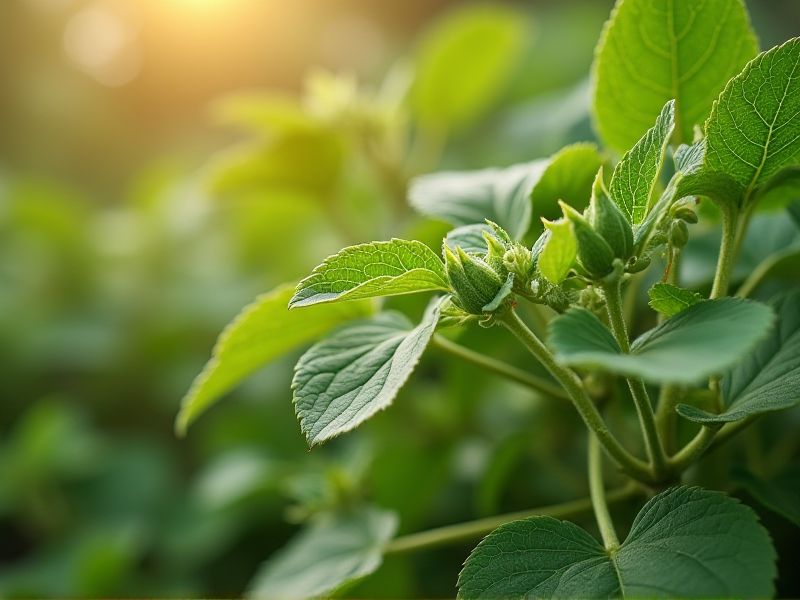
Homesteading includes cultivating plants that yield nutritious food for your household. Common choices are heirloom tomatoes, which offer a rich flavor and are perfect for sauces and salads. Leafy greens like kale and spinach thrive in various climates and boast high vitamin content. Root vegetables such as carrots and potatoes provide essential carbohydrates and can be stored for longer periods. Incorporating fruiting plants like strawberries and blueberries can enhance your diet while offering natural sweetness.
List of some Homestead plants that provide food
- Tomato (Solanum lycopersicum)
- Zucchini (Cucurbita pepo)
- Strawberry (Fragaria × ananassa)
- Raspberry (Rubus idaeus)
- Basil (Ocimum basilicum)
- Spinach (Spinacia oleracea)
- Carrot (Daucus carota subsp. sativus)
- Eggplant (Solanum melongena)
- Blueberry (Vaccinium corymbosum)
- Kale (Brassica oleracea var. sabellica)
Important things about Homestead plants that provide food
Edible Perennials
Edible perennials are an essential component of a homestead, offering sustainable food sources year after year. Plants like asparagus, rhubarb, and artichokes not only require minimal maintenance once established but also enhance biodiversity in your garden. Berry-bearing shrubs such as raspberries and blackberries can provide delicious fruits, while herbs like thyme and oregano add flavor to your dishes and attract beneficial pollinators. Incorporating these hardy plants into your landscape ensures you have a reliable food supply while promoting a healthier ecosystem.
Companion Planting
Companion planting in a homestead garden emphasizes strategic pairings of plants that enhance growth, deter pests, and improve flavors while providing food. For example, planting tomatoes alongside basil not only boosts the flavor of the tomatoes but also repels harmful insects such as aphids. Beans, when grown with corn, fix nitrogen in the soil, benefiting the corn's growth and creating a self-sustaining ecosystem. By carefully selecting such companions, you can maximize your garden's productivity and health, ensuring a flourishing food supply.
Crop Rotation
Crop rotation is a sustainable farming practice that enhances soil health and boosts yield in homesteads. By alternating the planting of legumes, such as peas and beans, with heavy feeders like corn and tomatoes, you can naturally replenish soil nutrients, improving its fertility. Incorporating cover crops, such as clover or rye, prevents erosion and suppresses weeds, creating a conducive environment for your food plants. This technique not only supports biodiversity but also reduces pest infestations, ensuring a thriving garden year after year.
Soil Health
Healthy soil is essential for growing a variety of homestead plants that yield nutritious food. You can enhance soil health by incorporating organic matter like compost, which enriches nutrient content and improves water retention. Sunflowers, tomatoes, and beans are excellent choices for your homestead garden; they thrive in nutrient-rich soil and contribute to biodiversity. Regular soil testing can help you monitor pH levels and nutrient balance, ensuring optimal conditions for your plants.
Heirloom Varieties
Heirloom varieties of plants are vital for sustainable homesteading, as they offer unique flavors and resilience against diseases. These time-tested seeds, often passed down through generations, include fruits, vegetables, and herbs that thrive in diverse climates and soil conditions. Growing heirloom tomatoes, for instance, not only enhances your garden's biodiversity but also ensures a rich taste that hybrids often lack. By cultivating these plants, you contribute to preserving agricultural heritage and secure a reliable food source for your homestead.
Seasonal Planting
Homesteading offers a unique opportunity to grow seasonal plants that can provide fresh food year-round. In spring, you can plant cool-season crops like peas, lettuce, and radishes, which thrive in the mild temperatures before summer's heat. As the weather warms, consider transitioning to heat-loving plants such as tomatoes, peppers, and zucchini, ensuring a bountiful harvest throughout the summer months. In the fall, you can prepare your garden for winter by planting hardy vegetables like kale and Brussels sprouts, which can withstand frost and provide nutritious options even in cold weather.
Pest Management
Homestead plants such as tomatoes, peppers, and squash not only offer nutritious produce but also play a crucial role in integrated pest management. These plants can attract beneficial insects like ladybugs and lacewings, which are natural predators of common garden pests. Incorporating companion planting techniques, like pairing marigolds with vegetables, can help deter undesirable pests while enhancing plant growth. Maintaining a diverse array of homestead crops improves overall ecosystem health and reduces dependency on chemical pesticides.
Watering Needs
Homestead plants that provide food often require specific watering needs to thrive. For instance, tomatoes prefer evenly moist soil, necessitating regular watering to prevent blossom end rot, while root vegetables like carrots and potatoes flourish in well-drained, slightly dry conditions. Incorporating mulch around your plants can help retain soil moisture and reduce evaporation, essential for maintaining healthy growth. Understanding the individual water requirements of your plants will ensure a bountiful harvest and enhance your self-sustaining homestead.
Harvest Techniques
Effective harvest techniques are essential for maximizing yield from homestead plants that provide nutritious food. Utilizing methods such as hand-picking, secateurs for stem crops, or even specialized tools can significantly enhance your efficiency and minimize plant damage. Timing your harvest is crucial; crops like tomatoes are best picked when fully ripe for optimal flavor, while leafy greens thrive when harvested in the early morning. By implementing these strategies, you can ensure a bountiful and sustainable food supply from your garden.
Preservation Methods
Preservation methods for homestead plants include canning, freezing, and dehydration, ensuring that your harvest lasts through the seasons. Canning involves sealing fruits and vegetables in jars under high heat to eliminate bacteria, making it ideal for storing tomatoes and pickles. Freezing retains the freshness of peas and green beans, allowing you to enjoy their flavors long after harvest. Dehydrating herbs like basil and thyme intensifies their flavors and reduces spoilage, perfect for enhancing your culinary creations.
